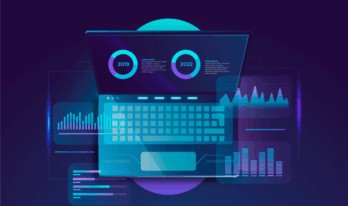Robot-As-A-Service is now a popular and rapidly growing service. Furthermore, it is convenient, cost-effective, and easy to implement.
Moreover, the continuous advancements in technologies now prompt market growth. Therefore, technologies like automation, artificial intelligence, machine learning, and now Robot-As-A-Service propel the dynamic changes in the market.
Many businesses are already using SaaS (Software as a Service) and IaaS (Infrastructure as a Service) in their operations. Hence, many businesses are now adopting newer technologies to experience complete digital transformation.
Robots are certainly used to enhance productivity in various industries. Businesses also train robots to execute repetitive tasks. As a result, RaaS provides agile solutions to businesses that are planning to or are already using robots in their processes.
Hence, in this article, we will learn more about RaaS and its benefits.
Understanding the concept of Robot-As-A-Service
What is Robot-As-A-Service?
Robot-As-A-Service is a process of using robots to gather, analyze and manage data in the cloud. It is a cloud-based “robotic rental” system that enables businesses to upgrade or downgrade systems. That is to say, it helps businesses to incorporate robotic process automation by renting robotic devices and accessing cloud-based subscription services.
Consequently, Robot-As-A-Service is an eccentric model that combines cloud computing, AI, Robotics, and other devices. Hence, with RaaS businesses avoid investing in multiple services with an integrated solution.
Robot-As-A-Service - Robots on Cloud and Rented
Robot-As-A-Service is now accessible in two main techniques: Robots As A Cloud Service and Robots on Rental. In other words, Robots as a Cloud Service enables businesses to store data with the help of data gathered using robots in the cloud. As a result, the robots across multiple locations connect to the cloud through the internet.
Further, Robots gain access to various software and cloud storage. Hence, the robots easily capture, share, store and analyze data in a central cloud through various locations that are easily accessible by humans. Therefore, it ensures a seamless flow of data and processes without interrupting business operations.
Consequently, it enhances the value of businesses executing various robots, where each robot executes multiple tasks.
How Would Robot-As-A-Service Evolve?
The evolution of technology is a constant phenomenon. Hence, this provides more innovative and efficient solutions. Therefore, businesses leverage robots and robotic services and incorporate them into more human-intensive processes.
Moreover, robots and their services are evolving continuously. Further, robots are now ready to deal with various categories of information. Hence, this ability to comprehend data enhances the process to make complex decisions.
Above all, working environments are becoming more diverse. Hence, robots and their services need to be more dynamic to provide a variety of solutions.
Moreover, the recent requirement is for compact and powerful robots that function autonomously without impacting the human workforce. There is also a requirement to create more programmable, customizable, and affordable solutions.
Additionally, there are better technological innovations in the open-source area to help enhance robots.
IDC’s Manufacturing Insights Research Manager, John Santagate states, “Robotics as a technology has really reached its tipping point. Robotic capabilities continue to expand while increasing investment in robot development is driving competition and helping to bring down the costs associated with robots.”
Benefits for Industries from Implementing Robot-As-A-Service
The automotive industry popularly prefers the Robot-As-A-Service model. Industries like retail, healthcare, logistics, agriculture, electronics, and education are also adopting this model. Although the rise in this model occurs due to the increasing labor costs, labor shortage, and reduction in the cost of robotic systems.
Moreover, the fastest growing industries, healthcare, and manufacturing are now leveraging RaaS. Therefore, the manufacturing industry invests more in robots, while the healthcare industry is gradually adopting them.
RaaS also provides several possibilities for the retail industry. Retailers use robots for stock monitoring and assessments, customer interaction, demand predictions, etc.
RaaS also continuously offers flexibility, scalability, and lower costs than traditional robotic systems. It also provides organizations the ability to control the upgrade and downgrade easily and rapidly according to market conditions.
Especially, for businesses that already use SaaS, RaaS is easy to implement. RaaS is also economical for businesses as it benefits clients and customers while guaranteeing additional revenue streams.
Hence, adopting RaaS would help maintain and upgrade operations on-demand. As a result, businesses will gain smarter, faster, and more programmable solutions.
Here are the Examples of Robotic-As-A-Service Solutions
Amazon uses robots for assembly, packaging, last-mile deliveries, environmental monitoring, etc. Moreover, its Autonomous Mobile Robot (AMR) and Autonomous Ground Vehicle (AGV) markets use robots for commercial logistics and other services.
Consequently, it integrates robotic technologies for more efficient and effective processes. AWS RoboMaker enables Robots to run ROS (Robot Operating Systems). As a result, it navigates, communicates, comprehends, streams, and learns data. It also executes tasks and processes rapidly and easily.
Deloitte offers customizable, intuitive, and innovative solutions. The solution benefits employees and provides more satisfactory end results.
Deloitte’s team includes experts and professionals that provide consultations to businesses. The solution also offers analytical and up-to-date knowledge to increase efficiency.
These are the following ways in which the solution solves queries:
-
- Detect and examine the requirements to enhance the service.
- Developing the solutions with the help of experts and professionals.
- On-premise process execution runs on the cloud.
Google’s Cloud Robotic Core is an open-source solution that offers infrastructures essential to developing and executing robotic services. Moreover, it combines AI, the cloud, and robotics to enable an open ecosystem for business automation services.
It also helps manage robotic fleets for developers and operators to monitor operations.
According to Sandy Agnos, Brain Corp.’s Director of Global Business Development, “Robotics and the Cloud (RaaS) are like peanut butter and jelly. It is an open ecosystem of automation solutions that use cloud-connected collaborative robots. Our AI and ML services will make sense of the unpredictable physical world, enabling efficient robotic automation in highly dynamic environments.”
Honda RaaS Platform is a software platform concept that simplifies the development process for robotics solutions. It also provides interfaces and packages as APIs and SDKs to run common functions. Moreover, it collects and transfers data to manage communication, changing states, and robotic operations.
Further, it aims to enable seamless integration of robotic services simply by facilitating cooperation between robotics devices, systems, and applications.
Addressing the Future Challenges in RaaS
Before RaaS becomes a robust solution, like any other technology it faces issues. Let us address some of the challenges that we need to overcome.
-
Cognition:
Cognition is the process where robots perceive, comprehend, and navigate through dynamic environments. It is also one of the key challenges in RaaS that requires attention for the future of Robotics.
-
Manipulation:
It is pivotal that robots need to train and learn to adapt themselves to various environments. Moreover, it is necessary for robots to precisely manage various components in order to execute tasks.
-
Interaction:
Interaction between the human workforce and robots is a challenge that requires attention. Further, what affects the interaction is the communication gap between humans and robotic services along with safety issues.
Conclusion:
The Robot-As-A-Service market is said to value at $41.30 billion by 2028 with a CAGR of 15.90 %. In conclusion, it can create diverse opportunities globally across industries. Hence, helping underdeveloped countries and their economies.
You May Also Like to Read:
Autonomous vs. Automatic Robots: Know the Difference
Robotic Process Automation in E-Commerce: Benefits & Use Cases




